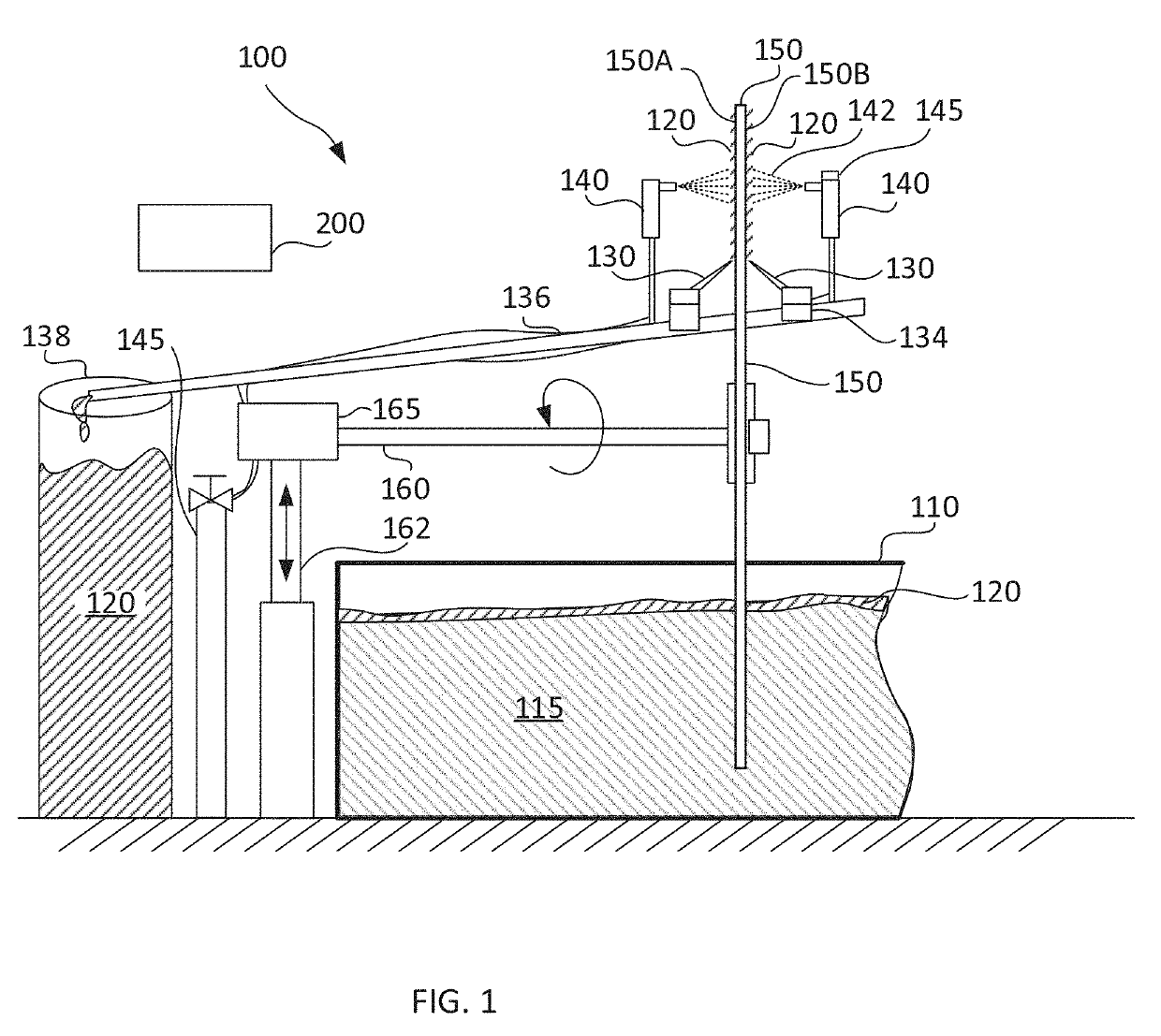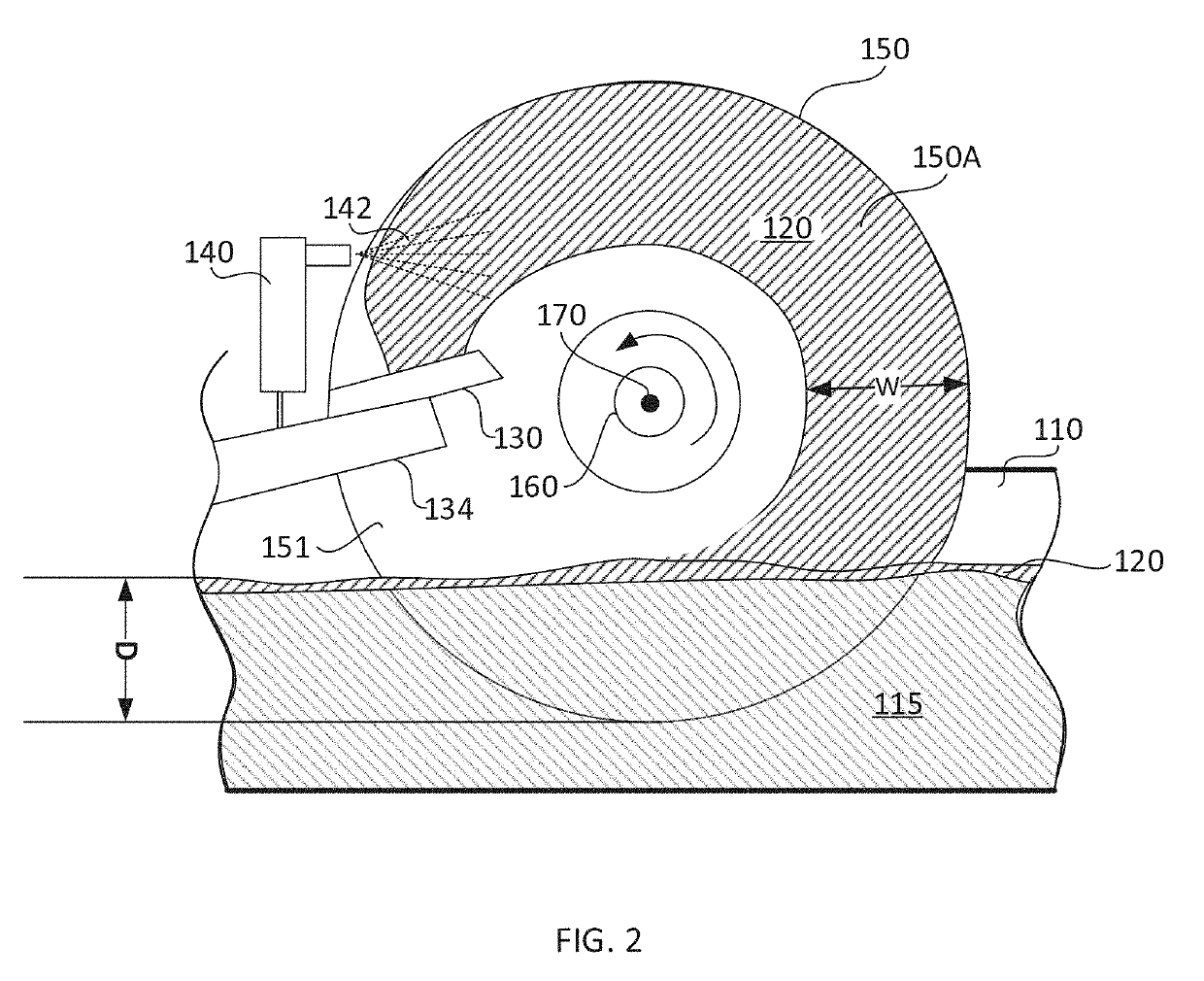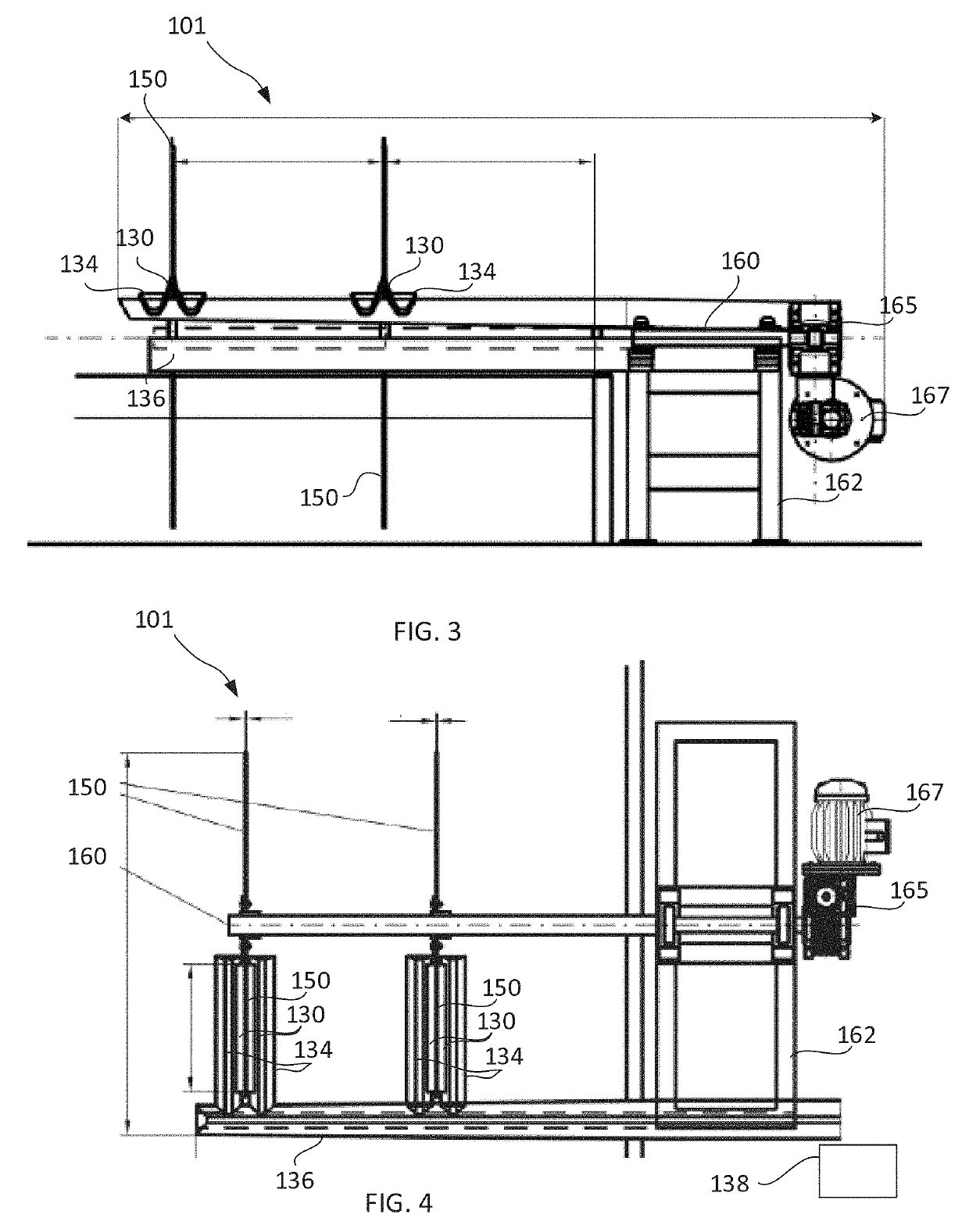System and method for harvesting aquatic plants
- Summary
- Abstract
- Description
- Claims
- Application Information
AI Technical Summary
Benefits of technology
Problems solved by technology
Method used
Image
Examples
example 1
[0092]A harvesting system prototype shown in FIGS. 12A and 12B was made with three discs, 80 cm in diameter all supported on a common shaft 160. Each of the discs was made from different material:
[0093]1) Polyethylene (252);
[0094]2) Stainless steel 304 (253); and
[0095]3) PolyVinylidene DiFluoride (PVDF) (251).
[0096]The three discs were partially submerged at a depth of 10-15 cm in a tank including wolffia culture as shown in FIG. 12B. The wolffia culture was at a density of 400-800 gm / m2, which enabled substantially full coverage of the water surface area.
[0097]The discs were rotated at a rotating speed of 1.5-3.0 rpm. The adhesion ability of the plant, e.g. the fronds to each of the discs material under different depth and speed condition was studied. Harvesting was achieved on each of the three discs. The highest harvesting capacity of the wolffia culture was achieved with the stainless-steel disc 253 in all various conditions tested.
example 2
[0098]A harvesting system as shown in FIG. 5 including two spinning stainless steel 304 discs 150 with a diameter of 90 cm was constructed and installed in a tank 110 including a wolffia globosa culture with an approximate surface density of 600 gm / m2.
[0099]The tank includes a raceway curve. The harvesting system was positioned at the beginning of the raceway curve of tank 110. The spinning discs 150 were inserted into the culture a depth of 15-18 cm and rotated at a rotation speed of 2.4 RPM. The rotation was controlled by variable frequency converter. A scrappers 130 made from PVDF were installed to scrap the plants off of surface of discs 150. Removal of the plants was further facilitated with a small spray of water from nozzles 140. A harvest rate of 575 gm / min was achieved. After 40 minutes of operation, 23 kg of material were harvested. The rotational speed of discs 150 was then increased to 3 and 4 RPM. This increase had a negative effect on the adhesion ability on discs 150 ...
PUM
 Login to View More
Login to View More Abstract
Description
Claims
Application Information
 Login to View More
Login to View More - R&D
- Intellectual Property
- Life Sciences
- Materials
- Tech Scout
- Unparalleled Data Quality
- Higher Quality Content
- 60% Fewer Hallucinations
Browse by: Latest US Patents, China's latest patents, Technical Efficacy Thesaurus, Application Domain, Technology Topic, Popular Technical Reports.
© 2025 PatSnap. All rights reserved.Legal|Privacy policy|Modern Slavery Act Transparency Statement|Sitemap|About US| Contact US: help@patsnap.com



